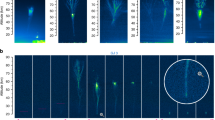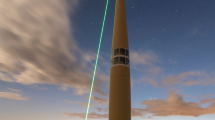Abstract
MANY years ago I published a discussion of the origins of lightning discharges1 which affirmed that a discharge would be expected to begin at a place of maximum electric force (not potential) and to bore its way through the atmosphere, without tearing it, initially along the direction of the force. I now add to this a theorem, due, I think, to Clerk Maxwell, that in an electrostatic field the force cannot be maximum anywhere in free space. It follows that discharges must be initiated, most probably at any rate, within the thunder-cloud. If the discharge begins from a conducting surface, similar reasoning would assign its origin to the more convex parts. As the moving camera of Sir Charles Boys has proved its efficiency in various hands in tracing the course of discharges, this theoretical conclusion may be useful in discussion of observations.
This is a preview of subscription content, access via your institution
Access options
Subscribe to this journal
Receive 51 print issues and online access
$199.00 per year
only $3.90 per issue
Buy this article
- Purchase on Springer Link
- Instant access to full article PDF
Prices may be subject to local taxes which are calculated during checkout
Similar content being viewed by others
References
Proc. Roy. Soc., A, 90, 312–318 (1914); "Math. and Phys. Papers," 2, 457–467.
Author information
Authors and Affiliations
Rights and permissions
About this article
Cite this article
LARMOR, J. Lightning Strokes. Nature 141, 115 (1938). https://doi.org/10.1038/141115b0
Published:
Issue Date:
DOI: https://doi.org/10.1038/141115b0
This article is cited by
-
The Effect of Sunset on Atmospherics
Proceedings of the Indian Academy of Sciences - Section A (1941)
Comments
By submitting a comment you agree to abide by our Terms and Community Guidelines. If you find something abusive or that does not comply with our terms or guidelines please flag it as inappropriate.



